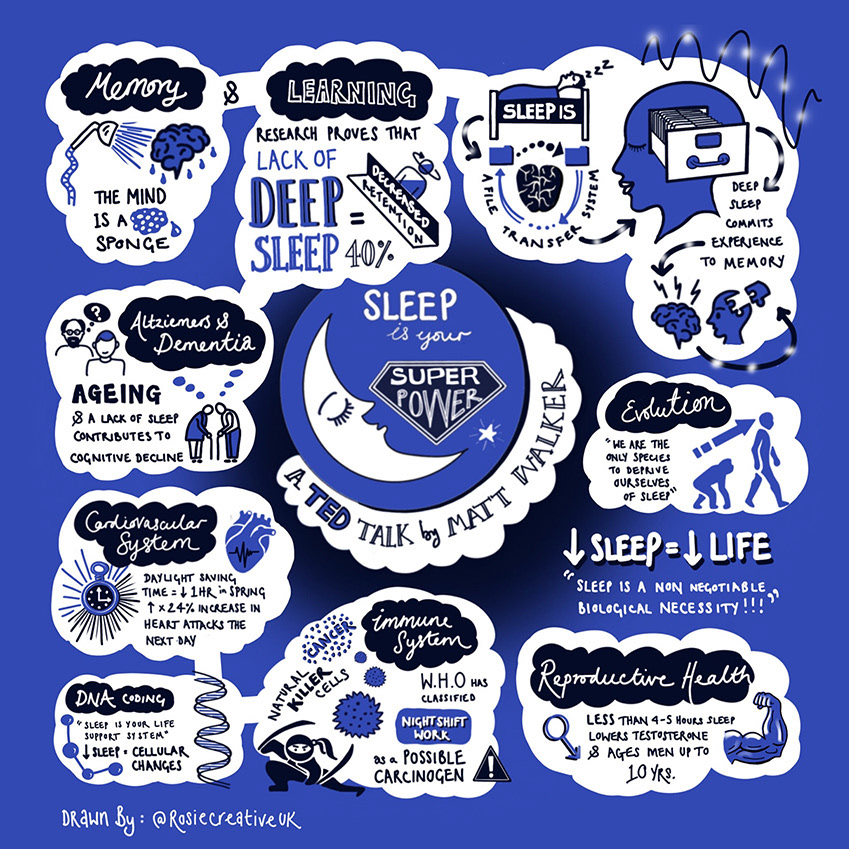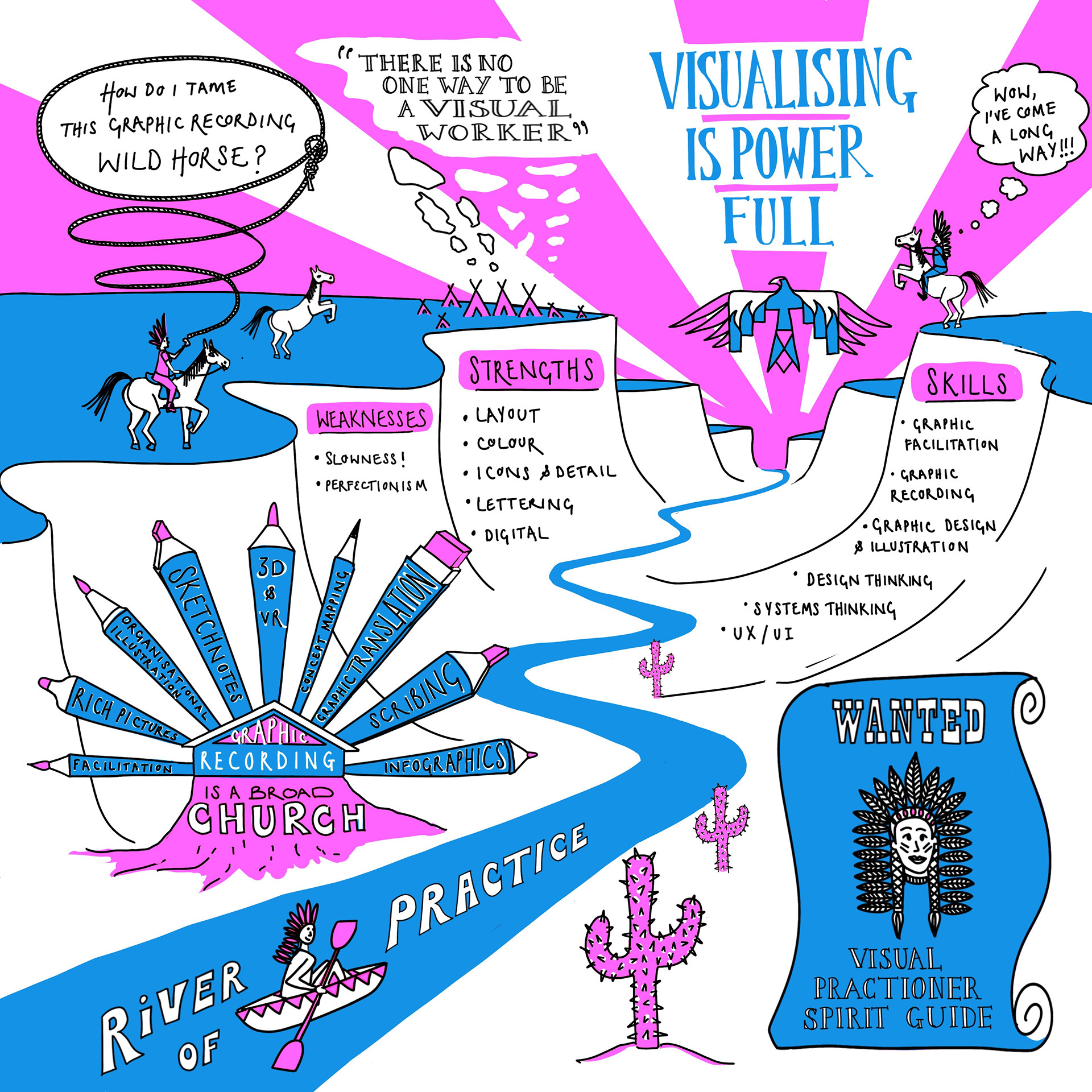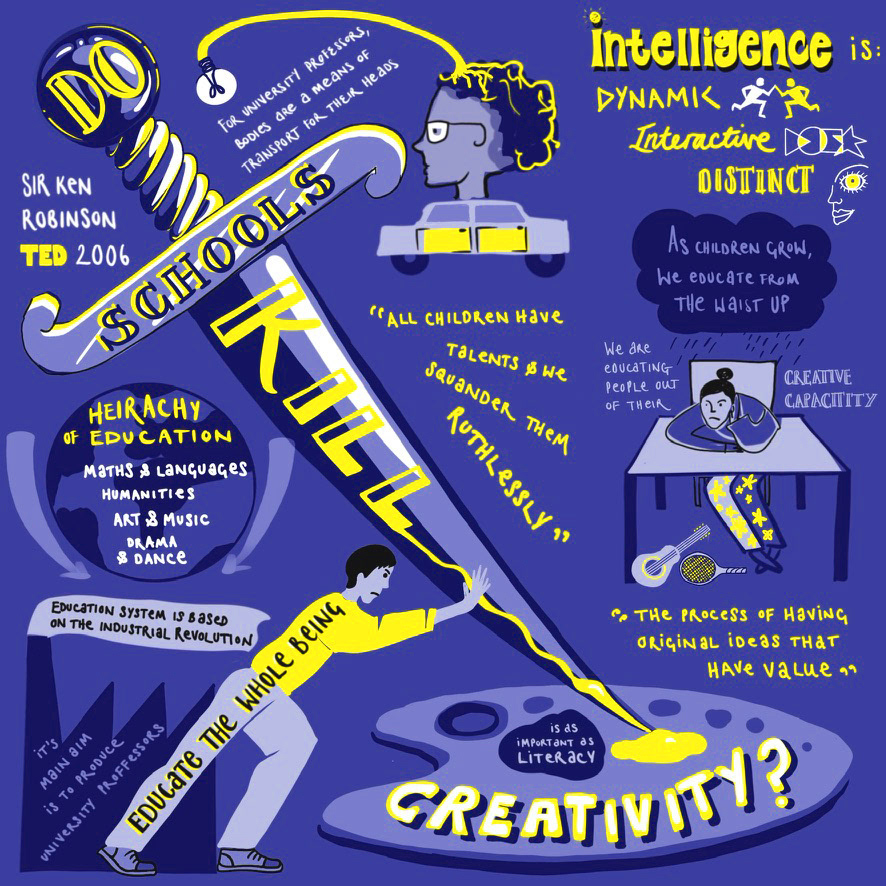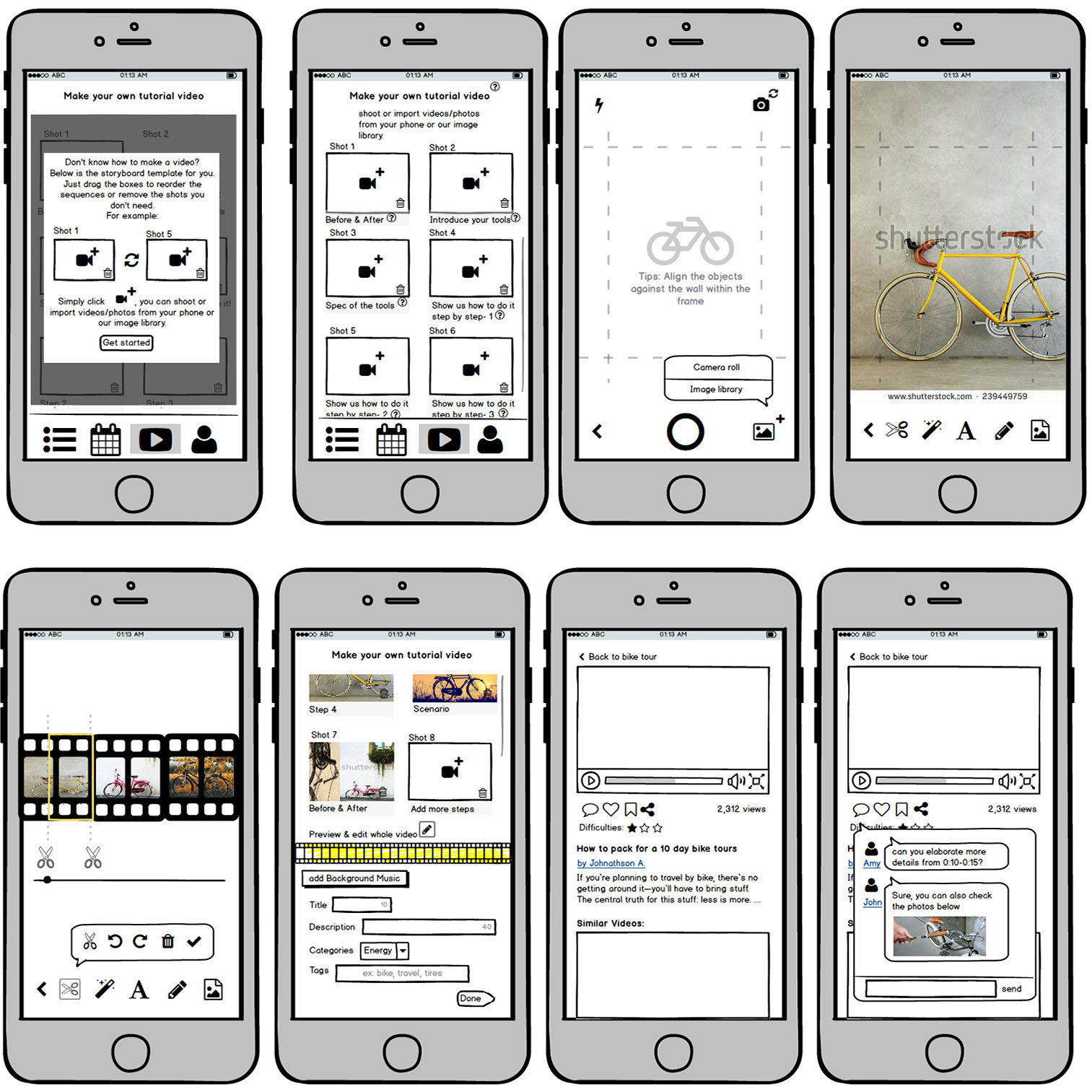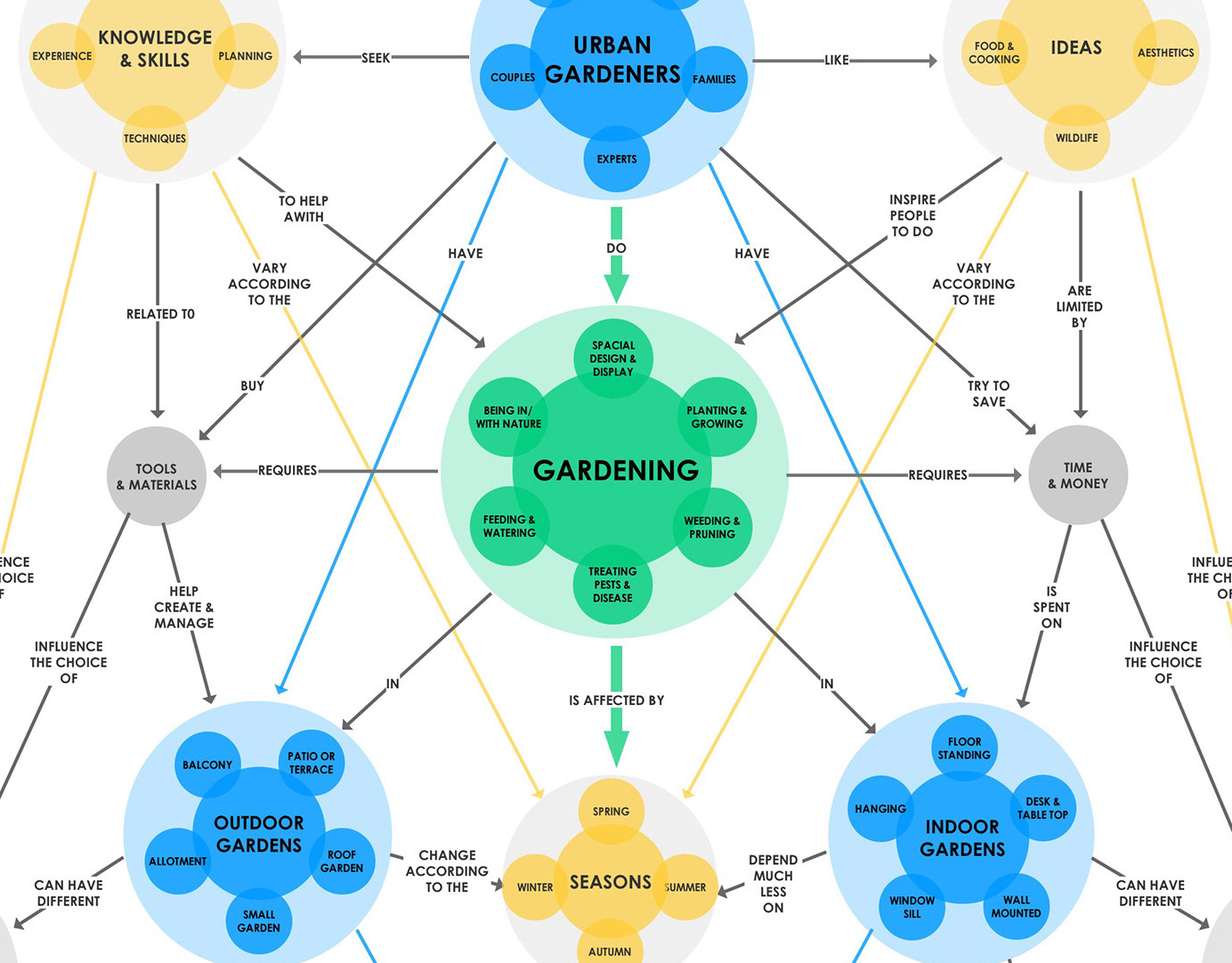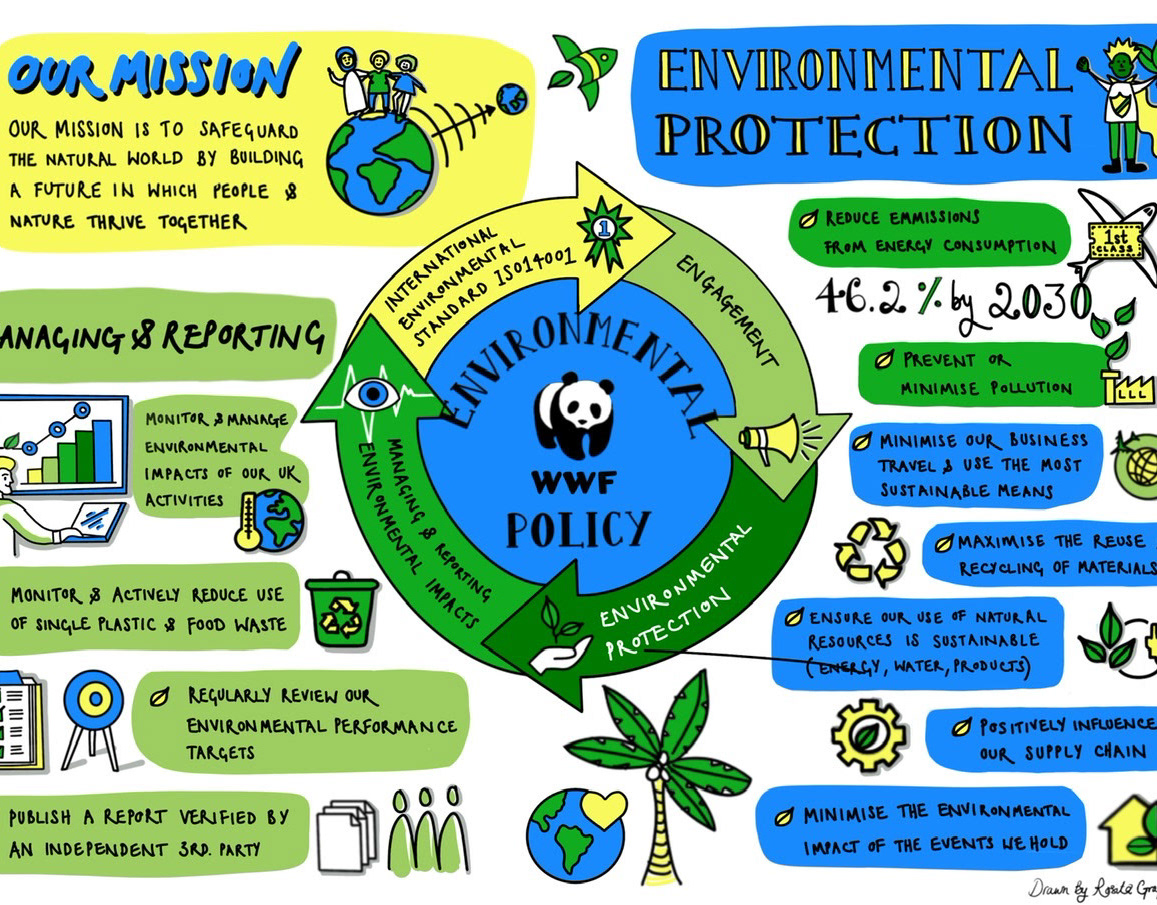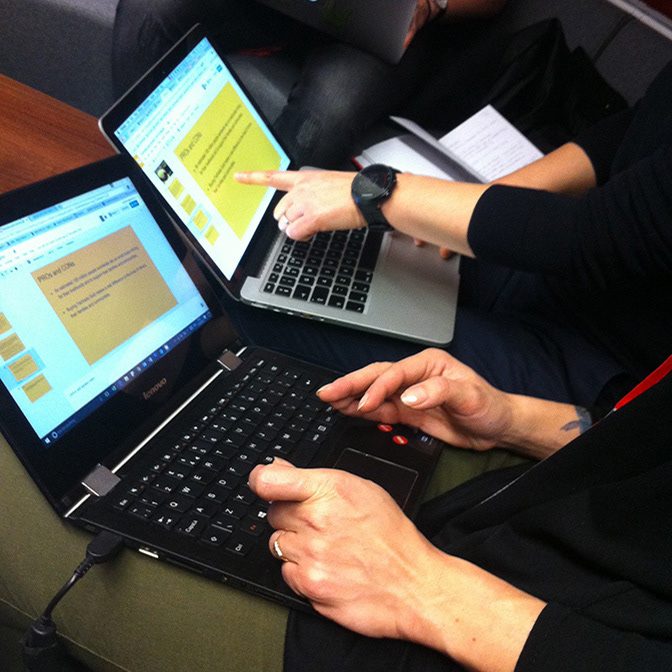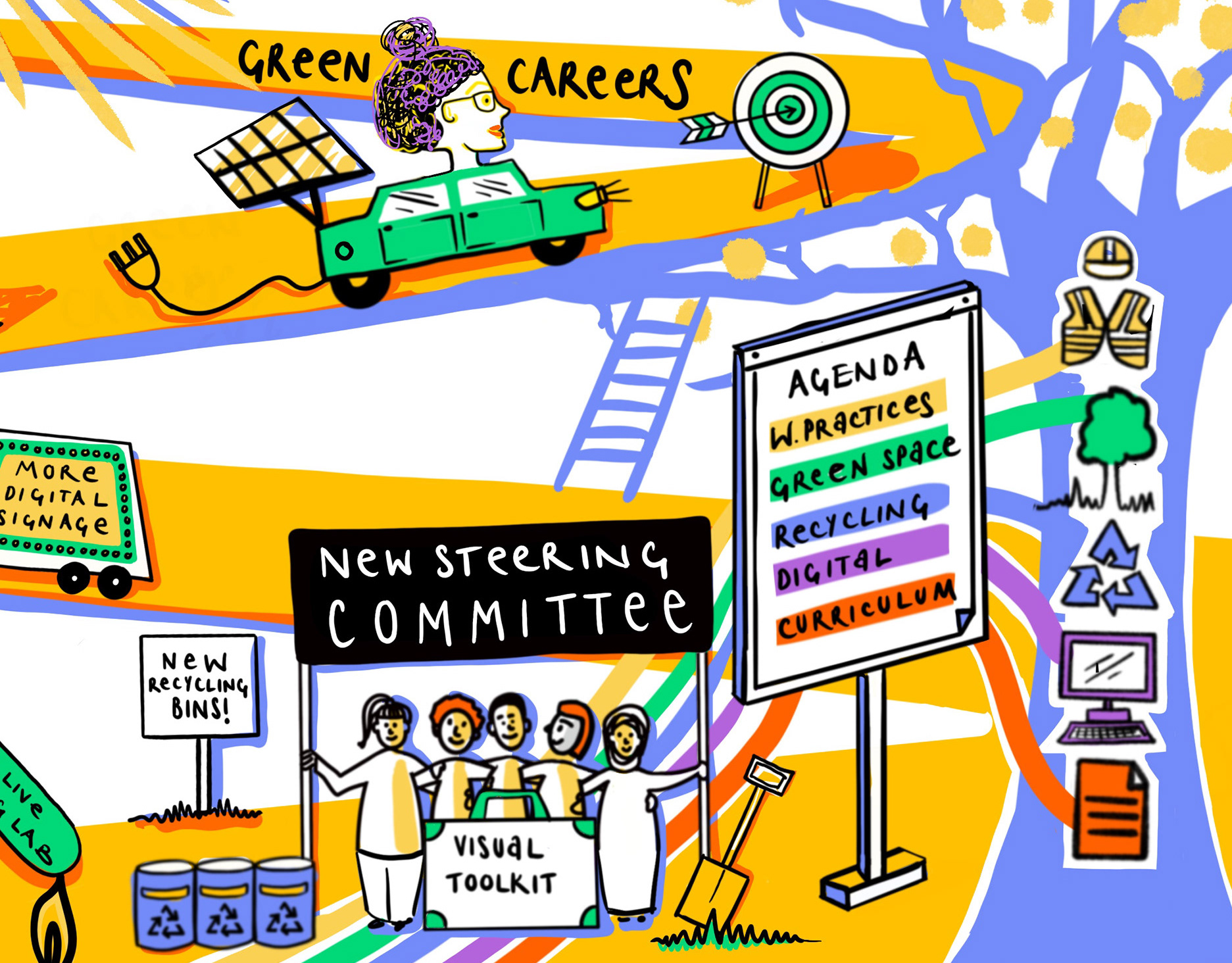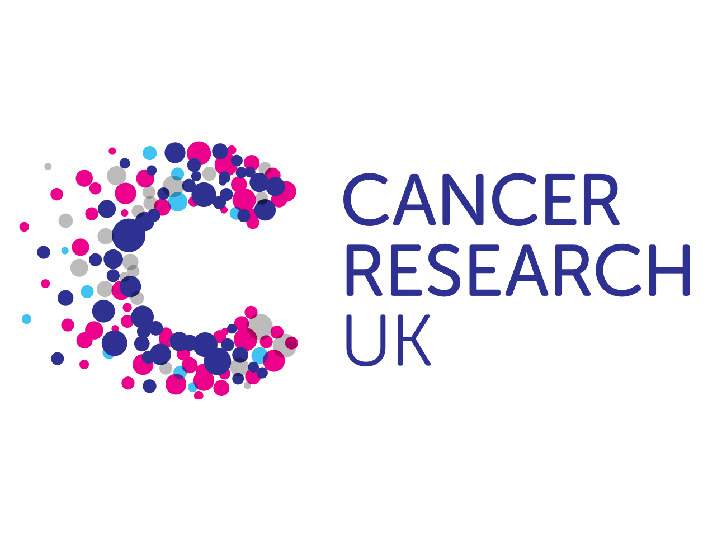*5-6 minute reading time*
Taking inspiration from Westminster City Council’s 20 year ‘Climate Emergency Action Plan’, the 'Power Hour' workshop was designed to help Westminster Adult Education Service (WAES) ideate a vision of a sustainable adult education service, both now and in 20 years time.
Introduction
This is an illustrated case study outlining the process and outcomes of a one hour 'Power Hour' visual thinking ideation workshop that I designed and delivered for the Senior Management Team and Heads of Department at WAES to help kick start the creation of their first ever sustainability action plan.
Sustainability Pathway
Sustainability is a huge and complex topic so creating any kind of roadmap is a very daunting task, particularly for large organisations and businesses. I was delighted to be asked by WAES to lay the foundations by planning an ideation workshop.
As a graphic facilitator, my aim is to make the process fun, engaging and meaningful in order to inspire deep rooted organisational change in the shortest available time, for a group of senior staff members who do not regularly have the opportunity to collaborate. The 'Power Hour' title is a both a pun on the workshop theme to create an energy strategy, as well as a metaphor for the kind of creative workout that I hoped to facilitate!
Key Questions
Using a combination of graphic facilitation and design thinking techniques, the workshop was designed to answer one main question, 'How might we address sustainability at WAES? Now and in the future?' Huge questions! So, before I go on, I'd like to briefly define these slightly exotic sounding terms - graphic facilitation, ideation and design thinking...
Graphic Facilitation
Graphic facilitation refers to the use of words, symbols and pictures to facilitate and record a conversation or process. The aim is to use images to prompt conversations, encourage fresh perspectives, and identify new ways to address problems.
Graphic facilitation is a bit like cold calling. You're asking people to step out of their comfort zone to try something new. Here I am intoroducing myself and explaining the 'what', 'why' and 'how' of the workshop session.
Graphic facilitation refers to the use of words, symbols and pictures to facilitate and record a conversation or process. The aim is to use images to prompt conversations, encourage fresh perspectives, and identify new ways to address problems. Plus, everything is visualised in order to document and externalise complex ideas and concepts that spark ongoing debate and dialogue and serve as a fantastic form of memory capture 🧠 ✨
Here are two of my "weapons of choice" when it comes to graphic facilitation - interactive whiteboards, flip charts, my massive oversized visual timer and lots of big marker pens!
Ideation
The aim of an ideation session is to create a large number of ideas that the team can filter through and cut down to the best, most innovative, and practical solutions. Ideation promotes open thinking and risk taking in order to create strong and unique ideas. Ideation is different to that of a typical idea planning session in that it allows independent thinking with collaboration.
Design Thinking
Design Thinking is a human centred approach to innovation. It is a non-linear, iterative process that teams use to understand users, challenge assumptions, redefine problems and create innovative solutions to prototype and test. Design Thinking has been described as a way to “encourage organisations to focus on the people they’re creating for, which leads to better products, services, and internal processes” by Design Thinking leaders at IDEO.
Wicked Problems
"But what has that got to do with an adult education service sustainability action plan?" I hear you ask! Design Thinking can help teams investigate difficult questions, what are known as 'wicked problems' to uncover hidden opportunities. Wicked problems are problems with many interdependent factors making them seem impossible to solve.
The energy crisis and climate change are excellent examples. Similarly, the task of developing and implementing a sustainability action plan in a large organisation requires an enormous coordination of people, resources, and time, a very wicked problem indeed. Design thinking’s iterative process is extremely useful in tackling ill-defined or unknown problems by reframing the problem in human-centric ways.
Make Ideas Visible
And that's where I come in, by helping people to frame the questions that need answering and to generate a huge number of ideas in brainstorming sessions. I also take a hands-on approach to refining and selecting those ideas to develop, prototype and test alongside the creation of visual assets, project management and evaluation tools.
Below, is a step by step summary of how WAES went from having no collective sustainability vision, assets or plan, to the creation of a new sustainability agenda that will be later shaped into a formal action plan. This will be implemented over the next 5 years with the help of a new WAES staff and SMT led steering committee, supported and managed with a set of bespoke visual planning and management tools.
'Power Hour' Process
Part 1
Benchmarking
First a visual benchmarking exercise to establish how energy efficient WAES is considered to be now. Participants were each given a Sharpie pen & a pack of Post It notes.
Everyone in the room was invited to draw a lightbulb on a Post It note, regardless of whether they think they can draw. Then the participants were asked to place their lightbulb on a scale from 0 - 100% to symbolise how energy efficient they think WAES is currently - I estimated the mean average was approximately 25%.
This exercise generated a lot of strong emotions, and humour (note the lightbulb that is placed off the scale on the left!) which is a great place from which to leverage meaningful conversations about sustainability at WAES.
Part 2
Vision & Values
After the ice breaker activity, I introduced a ‘Vision & Values’ task, what I refer to as the “dream catcher exercise” which was designed to elicit and explore participant aspirations for WAES’s future; their hopes, their (wildest!) sustainability inspired dreams, as well as their fears, their “night mares”.
Using a combination of hand illustrated slides and posters, pens and post it notes, all of the participants were invited to imagine what a truly sustainable service might look and feel like. Participants gathered around tables in small groups to discuss and debate their thoughts and feelings, writing them down on sticky notes which they placed inside a big dream cloud poster that was provided on each table.
Over the course of an hour, the participants produced some truly wondrous ideas, from Abba voyage style avatars as a medium for teaching via a mixed virtual reality, to transport solutions for teachers to quickly commute between three different teaching locations, within the borough of Westminster. Some of the ideas for this included kayaking and paddle boarding down the Regents Canal to a rechargeable WAES electric vehicle(s) or shuttle service. More on this later on!
Part 3
Energy Strategy
The third part of the workshop was designed to make sense of the suggested ideas and initiatives, as well as the thoughts and feelings that were captured in the dream catcher session in order to form the basis of a new WAES energy strategy.
I drew a future journey map poster using the visual metaphor of stargazing to symbolise the huge endeavour that WAES is starting out on, its bright future, as well as representing the wishes of the participants in the form of stars in the night sky. The challenge was to attempt to map these new concepts and ideas, written (or drawn) on Post It notes, onto a visual timeline in the form of a giant charging battery template poster placed on each table.
As seen in the image below, the battery posters were sectioned into chunks of time; 0 - 5 years, 5 - 10 years and 10 - 20 years. Participants were invited to decide what can, or must be achieved, within a specified timeline to help to inform a new WAES’s sustainability journey map.

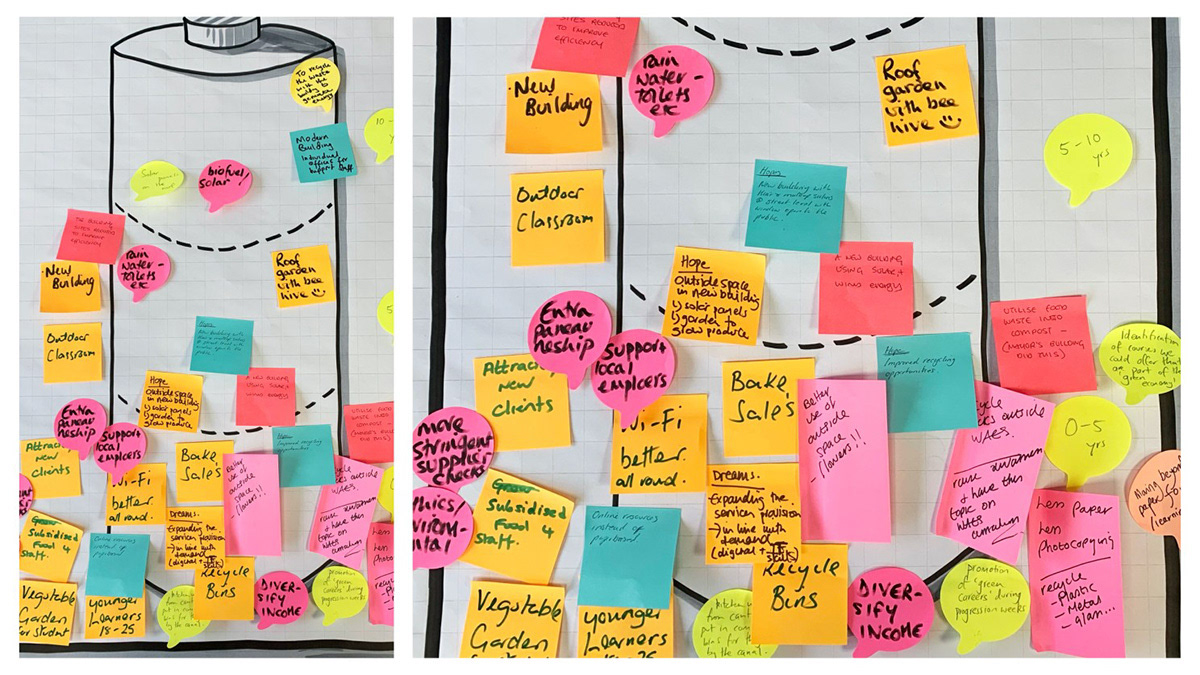
What struck me the most about the session is how much all of the participants suggestions communicated an overwhelming desire for a much closer connection to nature; from outdoor workspaces to outdoor classrooms, to introducing permaculture courses and a vegetable garden used by staff and students, to creating a pond, setting up roof top bee hives, rainwater harvesting for showers - the list goes on!
What appears to be crucial to a WAES sustainability agenda is not just reducing carbon emissions but the amount of fresh (clean) air, natural light and green space available. An overwhelming number of the ideas for a sustainable service appear to be synonymous with well being.
Part 4
Workshop Themes
The workshop generated an incredible amount of ideas in a very short space of time which are summarised in the slides below. In the final part of the workshop we reviewed the suggestions from each group and looked for connections and commonalities between them to form working titles or umbrella headings of broad themes that encompass the many different aspects of the WAES energy strategy.
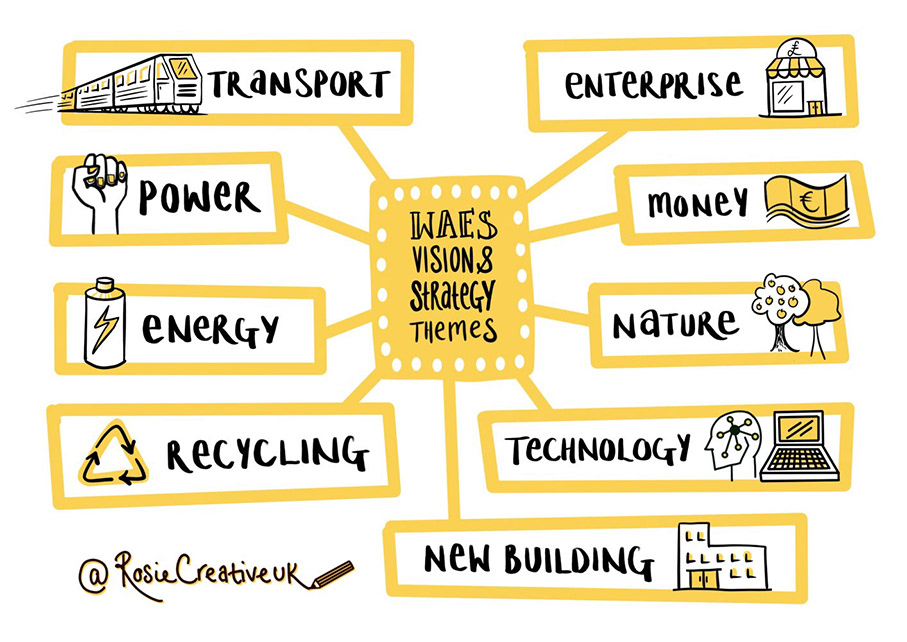
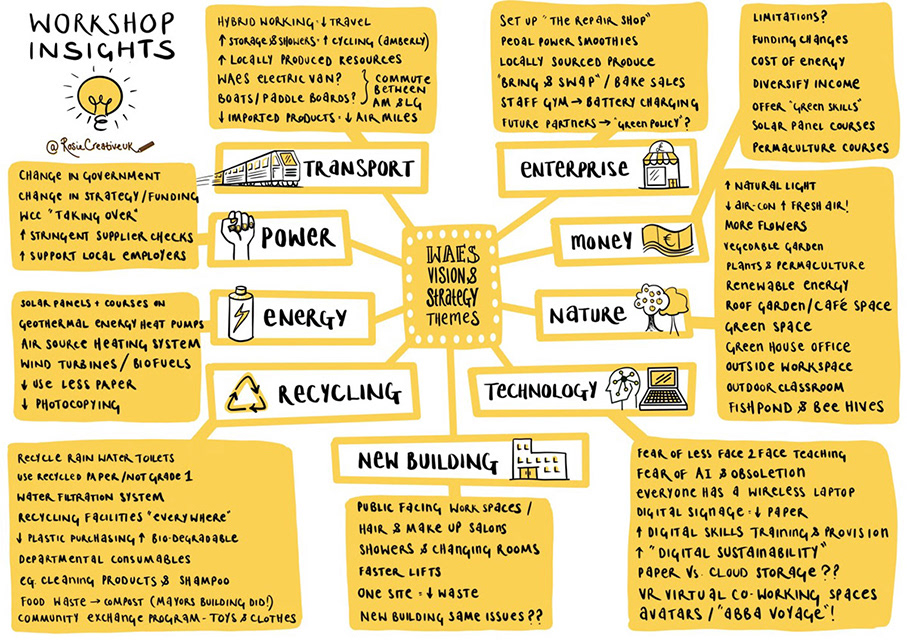
Setting the Agenda
There is now an official WAES sustainability steering group committee that will meet each term to action and review ideas from the workshop that relate to changes that can be made over the next 5 years. In order to support WAES in its ambition to become a sustainable service, I am in the process of creating a journey map in order to visualise change, and a set of visual project management tools that can be edited by the WAES steering committee.
Conclusion
By involving people in decision making, decisions are more likely to be legitimate, effective and sustainable. By the end of workshop all of the illustrated tabletop posters were filled with post it notes. More importantly though, there was a collective energy to drive change, as well as a necessary dialogue about the ongoing challenges and potential road blocks to achieving a sustainable service at WAES. It was a valuable opportunity for participants to communicate their frustrations, as well as their aspirations, in order to come up with actionable solutions.
As the WAES graphic artist in residence, I am in the wonderfully privileged position to help people to use their own creativity and imagination to find solutions through drawing, conversation and play. Drawing gives people power, as does the process of visual facilitation, which can help remove social barriers in order to create constructive conversations about challenging topics in an energised and inclusive space.
Ready to go visual? Let's chat! rosiecreativeuk@gmail.com
I’m also on Instagram @rosiecreativeuk
